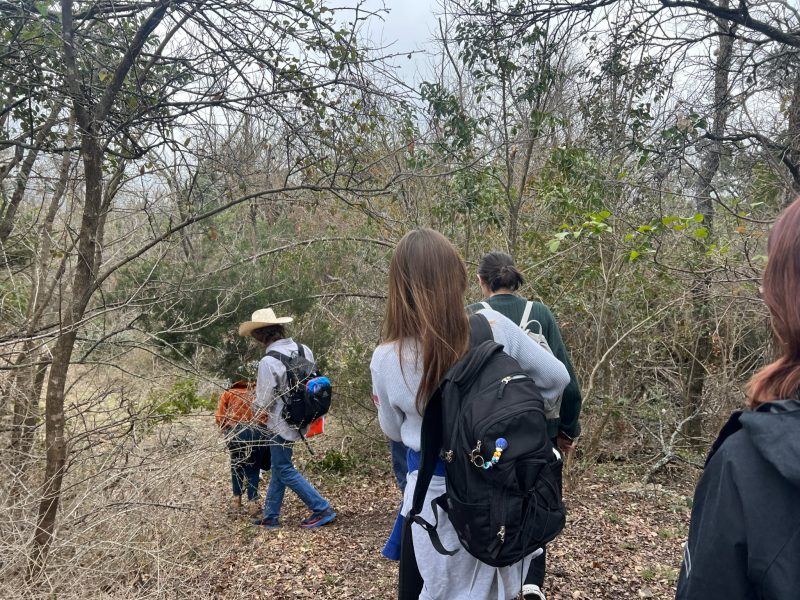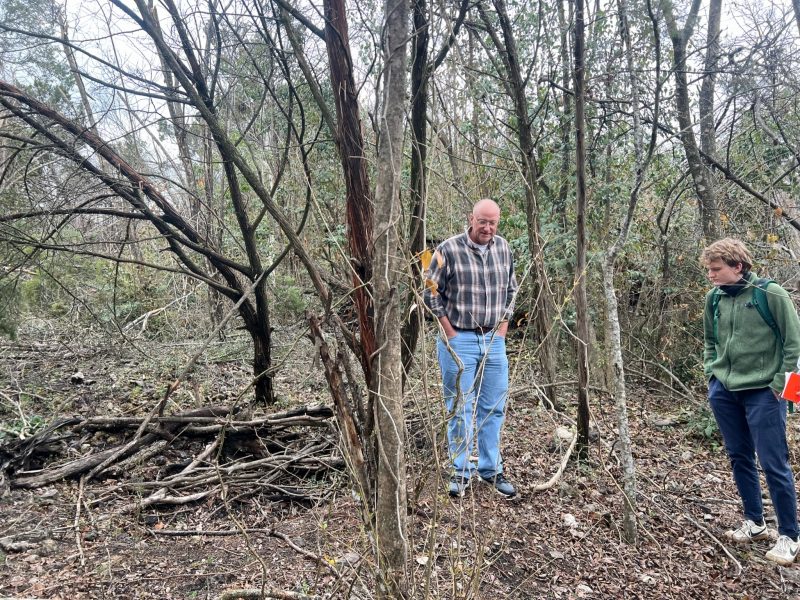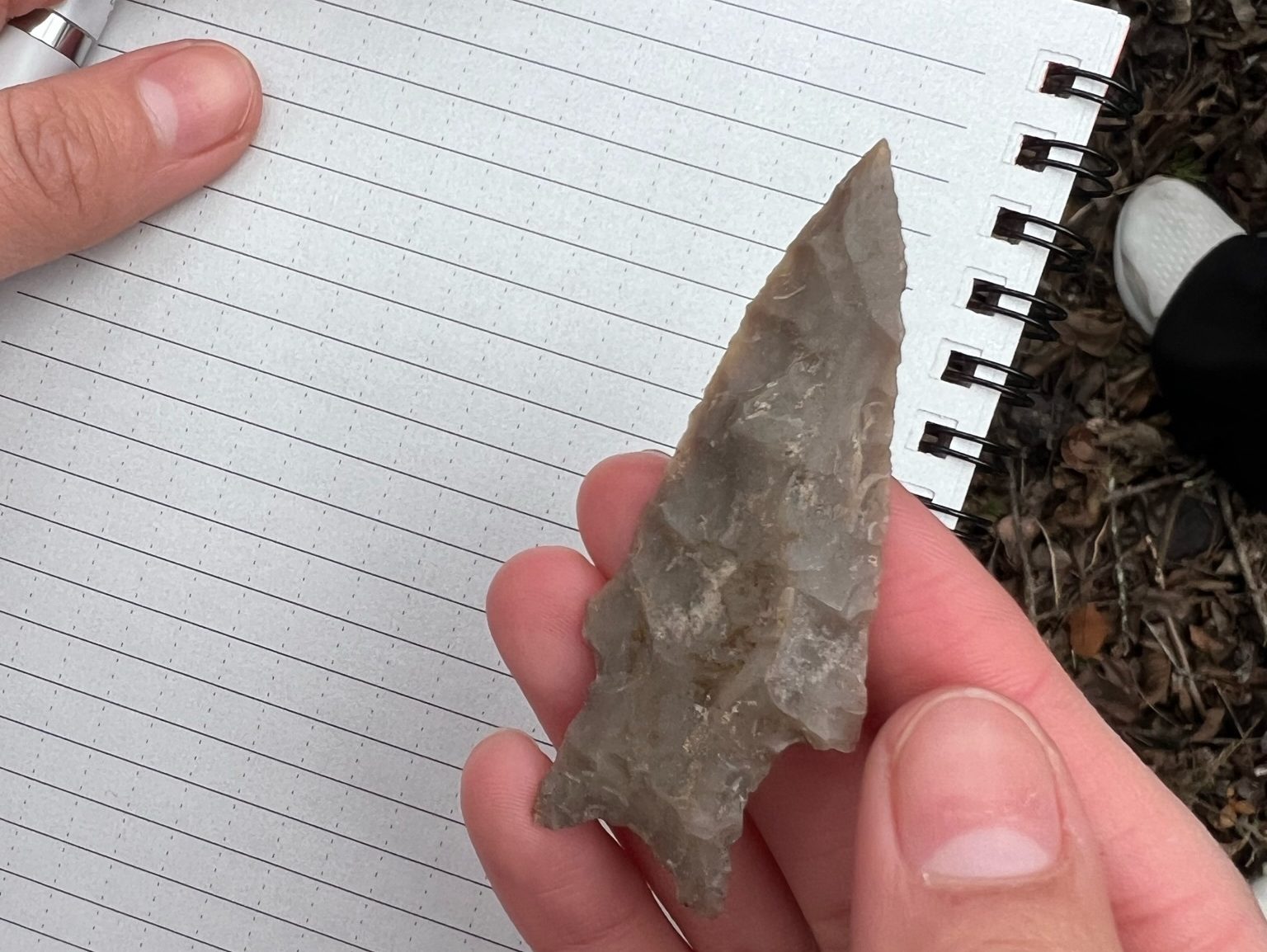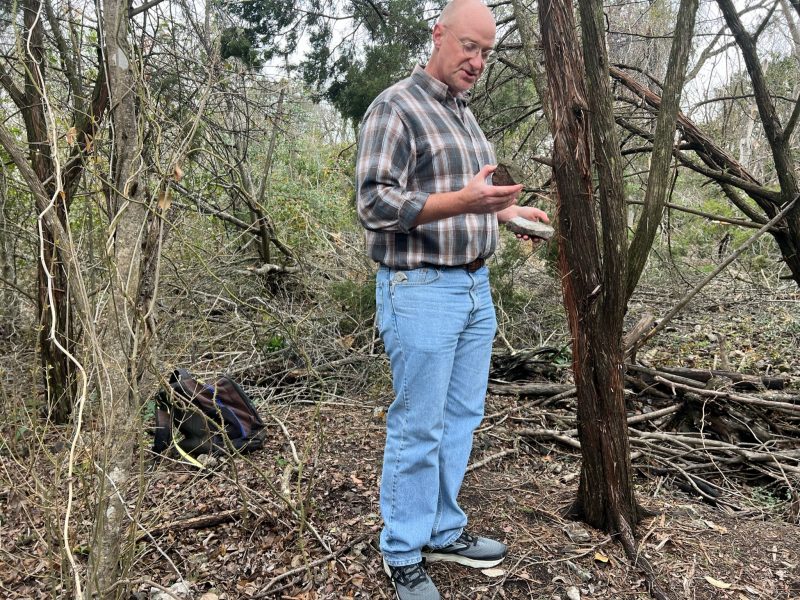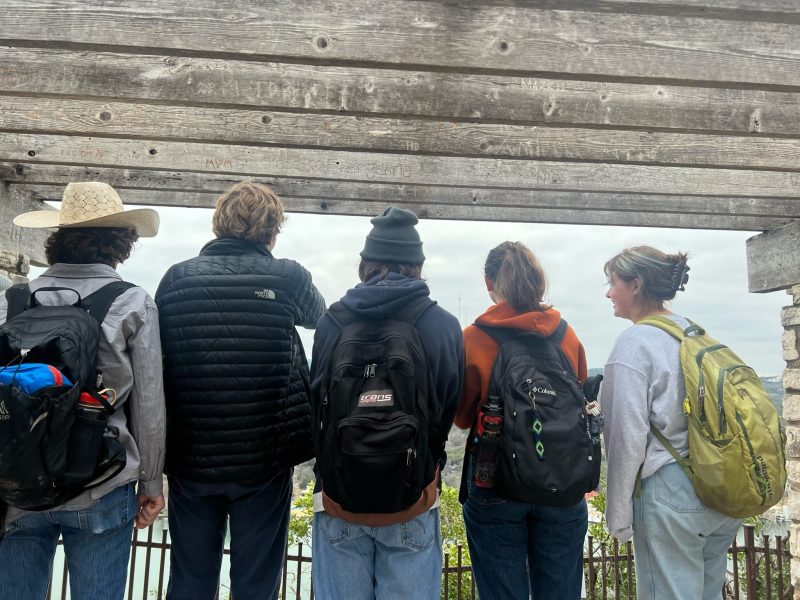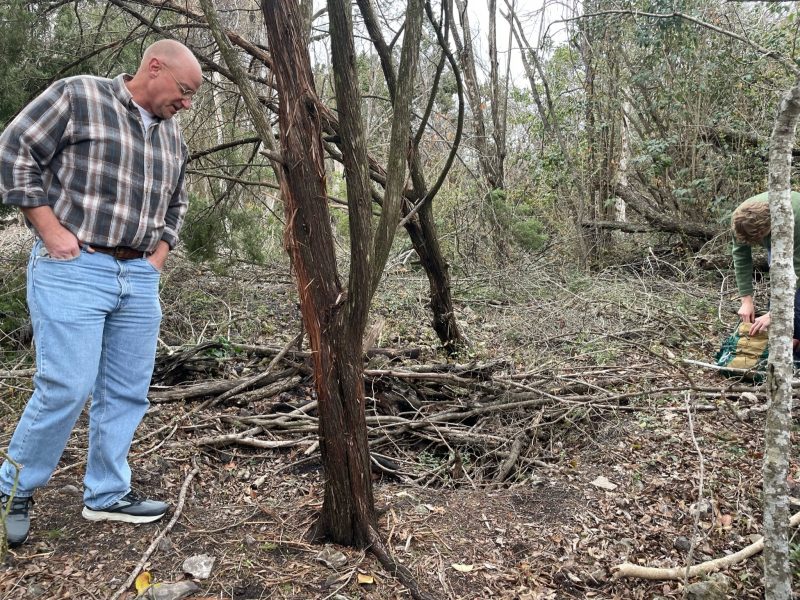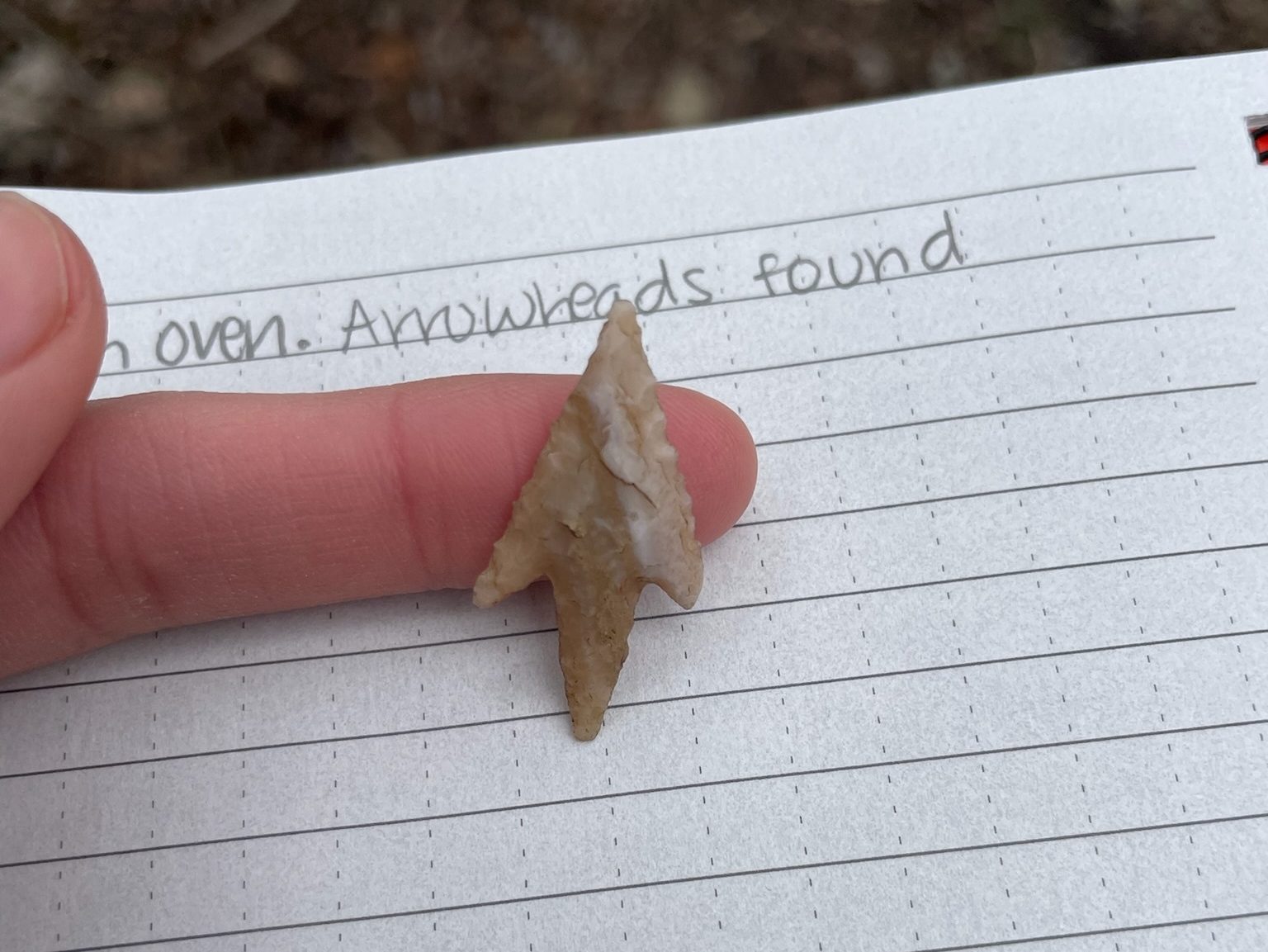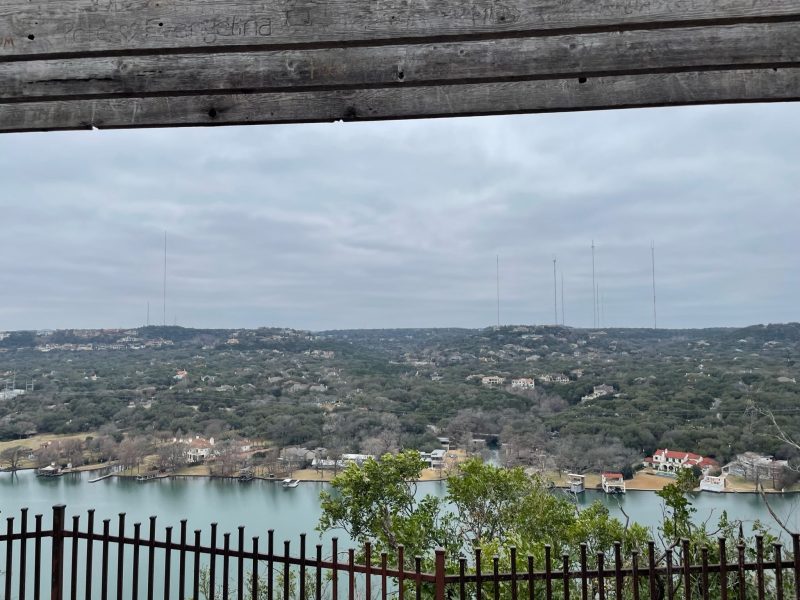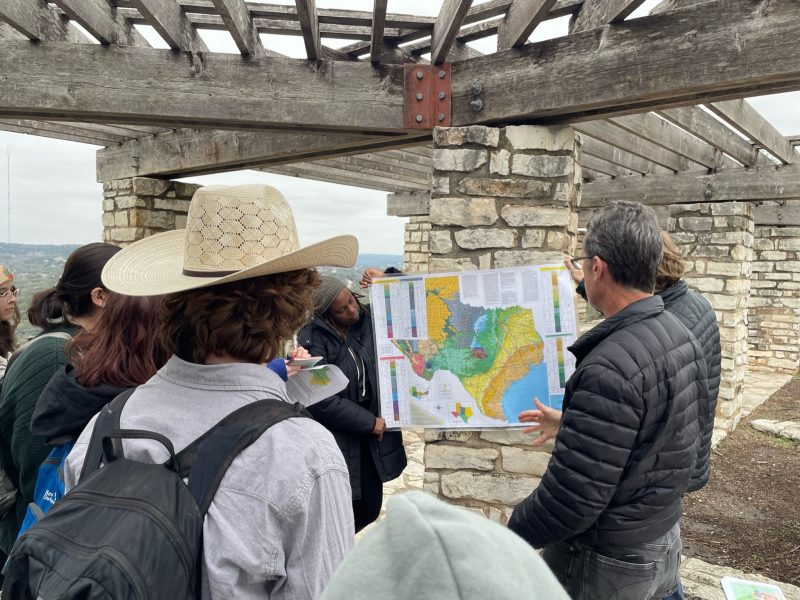Austin’s Geologic & Cultural History
The class visited the Rodgers Springs Site at north Mopac and Braker Lane near the West Pickle Research Building, where Jonathan H. Jarvis, the Associate Director of the Texas Archaeological Research Laboratory, identified evidence of human adaptation to climate change. He called attention to specific findings and choice of location and explained the reasoning behind why ancient indigenous people may have chosen to settle in the area and how they used their resources to their advantage in order to survive. Indigenous peoples settled in elevated areas close to water and food sources in order to avoid flooding hazards and have easy visibility of approaching invaders. They also constructed earth ovens that were meant to draw nutrients out of xerophytic plants that kept their nutrients and water tucked away as a result of a dry environment.
The class visited Mt. Bonnell to discuss Austin’s geologic history, and how it has changed and impacted its history of settlement, development of natural resources, and growth. To further understand Austin’s settlement history, Tasha Banks, the Assistant Director of Community Engagement and Health Equity in UT’s Dell Med Department of Population Health, gave an informative summary of Austin’s settlement history and how discrimination has affected it. She indicated how people of color now live in poorer areas with insufficient access to resources and healthcare. To close off, she gave the class recommendations on how to best interact respectfully and help those living in East Austin when the class studies environmental resilience in low-income areas. Dr. Banner explained Texas’s geology at the Balcones Fault Zone, where the western part of the Mount Bonnell Fault lies higher than the eastern part going out to the Gulf of Mexico. Millions of years ago, water and sediments were emptied out into the ancient coastline of Texas, causing the fault’s eastern side to sink under immense pressure. This difference in elevation and rock composition is still noticeable present day at Mount Bonnell.
